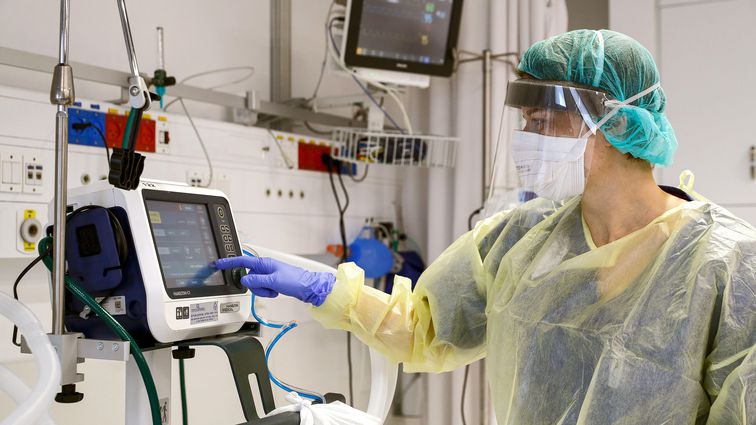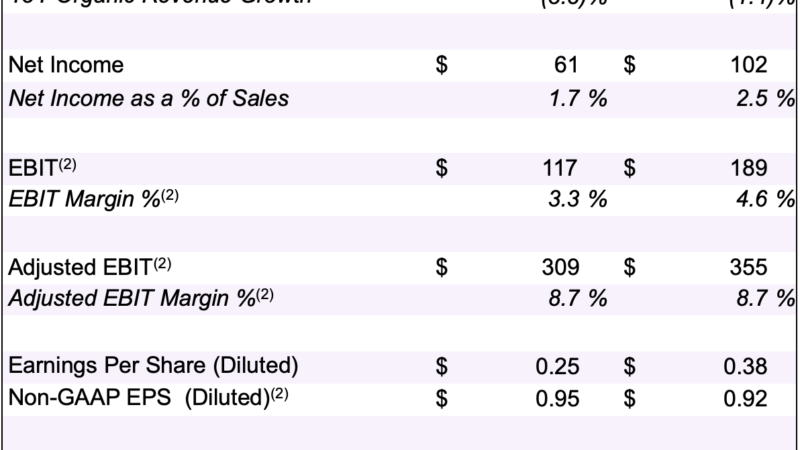Microsoft’s video chat technology is changing how this hospital fights coronavirus – CNET

Video chat is becoming an essential part of medicine during the coronavirus crisis.
Getty Images
For the most up-to-date news and information about the coronavirus pandemic, visit the WHO website.
You can’t walk into the intensive care units at St. Luke’s University Health Network because of concerns over spreading the novel coronavirus. But if you did, you’d see something new amid the beds, medical equipment and tubes. It’s a device with Microsoft’s Teams software running.
Over the past couple months, the hospital network — like so many of us — has turned to technology to bridge the in-person communication lost due to the threat from the coronavirus. The virus, which was labeled a pandemic by the World Health Organization last month, has caused 2 million confirmed cases around the world. Governments have imposed lockdowns, hoping to slow the virus’ spread and give hospitals time to treat victims.
St. Luke’s, which also calls itself SLUHN, was doing little with telehealth before the crisis. Its most notable initiative was a video chat device kept in the ER to help digitally bring doctors in other parts of the hospital to the bedside of suspected stroke patients. With the coronavirus, doctors needed to find new ways to treat patients without constantly changing in and out of layers of protective gear.
“We scoured our network for devices,” said Dr. James Balshi, the chief medical information officer for SLUHN and a vascular surgeon. Now it has about 100 devices it can bring to the ICU and some other beds, using Microsoft’s Teams video chat software to offer patients a way to communicate with doctors whether they’re in the room or not. “A telephone is better than nothing, but it doesn’t come close to looking at someone and seeing their facial expressions — it’s one of the most powerful parts of this.”
Microsoft made SLUHN available to talk with CNET as part of a series of blog posts and videos it’s produced about how companies are using its software during this crisis. Among them is the cosmetics brand L’Oréal, which leaned on video chat software to help the company adapt its factories around the world to produce hand sanitizer.
Our sudden reliance on video chat has made apps such as Zoom, Cisco’s WebEx, Apple’s FaceTime, Google’s Duo, Houseparty and Microsoft’s Skype daily parts of people’s lives. For Teams in particular, that’s translated into more than 40% growth in people using its product over the past couple months.
This shift to video chat has brought its own challenges. In some cases, outsiders log onto public video chats for schools or governments and start spreading pornography or racist imagery. In others cases, experts are raising concerns about potential security problems.
Still, it appears our broader use of video chat will likely continue after the crisis calms. For SLUHN, positive reception by even once reluctant doctors has helped to make that case, as well as Microsoft’s compliance with medical privacy laws.
SLUHN has encountered bumps along the way though. Doctors learned it’s harder for some people, particularly Parkinson’s patients and the elderly, to download the app and set it up for their virtual doctor visits, for example.
A doctor helps a patient use their phone.
Getty Images
“Not everybody has the son or daughter who can come over, especially now, and set you up,” Balshi said. It’s also another app patients have to deal with, on top of managing their electronic medical records.
Still, Balshi sees promise. The hospital network’s begun using Teams video chat for doctor visits too. It’s now notching about 3,000 per day. That’s half of what the hospitals normally provide, Balshi said, but still up from almost none before the crisis began.
“The reluctance and the uncertainty about it is gone,” he said. “Almost every provider in our network has had some contact with this now and has said, ‘Hey, we could do this and this works.'”

29 Photos








